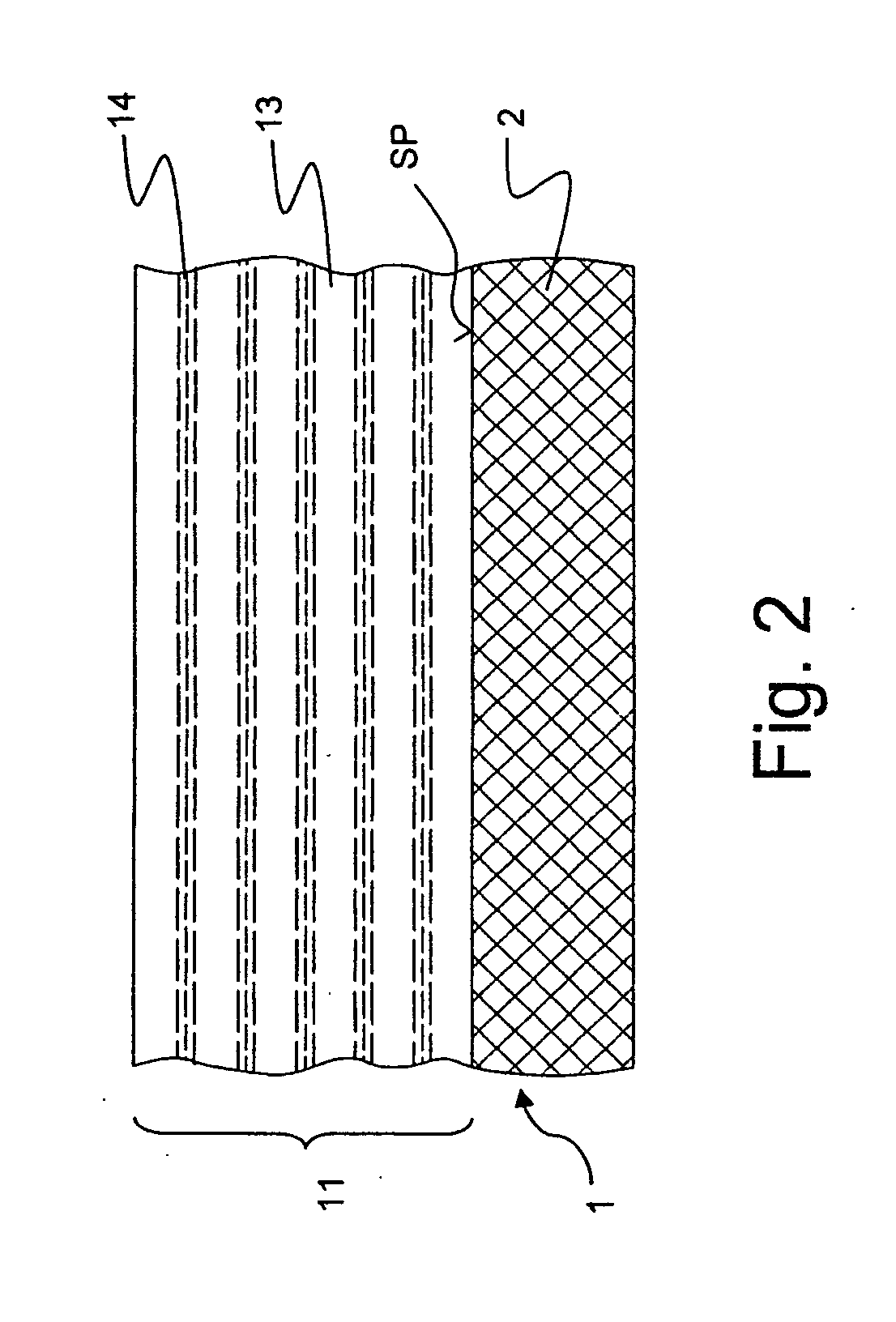HTS coated conductor with particle inclusions, and method of production of an HTS coated conductor
a technology of hts coating and conductor, which is applied in the direction of superconductor details, superconductor devices, crystal growth process, etc., can solve the problems of reducing the critical current and critical magnetic field, electrical losses, and insufficient current performance of low temperature superconductors (typically used in this area), and achieve good pinning effect, good pinning effect, and not too much distortion of hts layer lattice
- Summary
- Abstract
- Description
- Claims
- Application Information
AI Technical Summary
Benefits of technology
Problems solved by technology
Method used
Image
Examples
first embodiment
[0056]FIG. 1 shows a schematic, cross-sectional view of an inventive HTS coated conductor 1, comprising a substrate 2, e.g. of SrTiO3 or of steel tape type. The substrate 1 is typically equipped with a buffer layer, e.g. of CeO2 (not shown, for simplification). On top of the substrate 2 (or its buffer layer, if applicable), there is an epitaxial HTS layer 3, here of YBCO material. The HTS material of the HTS layer 3 is oriented such that the c-axis of the YBCO crystal (or its grains, respectively) is perpendicular to the substrate plane SP (compare the arrow c, on top of the HTS layer 3, indicating the c-axis direction).
[0057]Within the HTS layer 3, there are particle inclusions 4, which are here randomly distributed within HIS layer 3. In the example shown, all these particle inclusions 4 are of single crystalline YBCO material, with the same stoichiometry and as the material of the HTS layer 3, and with the same crystal structure. However, the particle inclusions 4 are also random...
second embodiment
[0063]FIG. 2 shows an inventive HTS coated conductor 1. Here a HIS layer 11 based e.g. on YBCO as HTS material, deposited on a (possibly buffered) substrate 2, comprises a number of first sublayers 14 and second sublayers 13. Particle inclusions (not shown in detail) derived from the HTS material are here confined to the first sublayers 14; these first sublayers 14 typically contain, in addition to the particle inclusions, HTS material and / or buffer material, such as CeO2, which is typically used to grow the used HTS material on top of, and / or an amorphous phase (which is not superconducting) of the stoichiometry of the HTS layer material. The first sublayers 14 are separated by the second sublayers 13, which are made of the HTS material and contain no particle inclusions derived from the HTS material (or at least contain much less particle inclusions derived from the HIS material as compared to the first sublayers 14, such as at least ten times less with respect to the volume fract...
PUM
 Login to View More
Login to View More Abstract
Description
Claims
Application Information
 Login to View More
Login to View More - R&D
- Intellectual Property
- Life Sciences
- Materials
- Tech Scout
- Unparalleled Data Quality
- Higher Quality Content
- 60% Fewer Hallucinations
Browse by: Latest US Patents, China's latest patents, Technical Efficacy Thesaurus, Application Domain, Technology Topic, Popular Technical Reports.
© 2025 PatSnap. All rights reserved.Legal|Privacy policy|Modern Slavery Act Transparency Statement|Sitemap|About US| Contact US: help@patsnap.com



